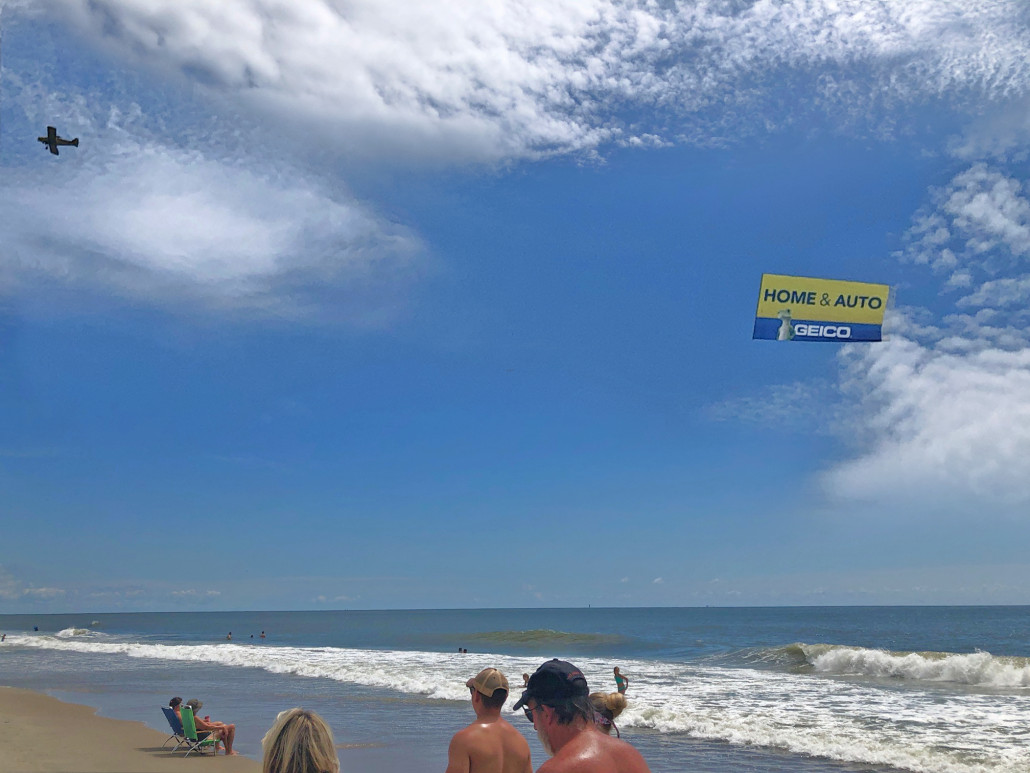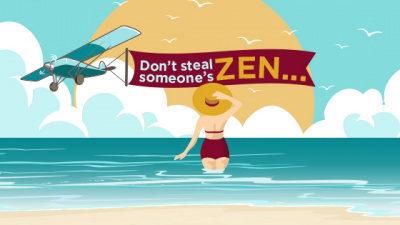Interruptive Advertising: If You’re Gonna Steal My Zen, Make It Worth It
by Kristin Brighton on September 5, 2019
Last month, my entire extended family went on a beach vacation to Tybee Island, Georgia. (My mom is retiring at the end of this month, and this was a celebration of her 50 years in the workforce. Congrats, Mom!)
The beach was a laid-back oasis of white sand and sun, and, given that the trip was during the first week of August, it was surprisingly not jam-packed. We spent our first full day in the glorious sunshine doing all the stereotypical beach things: wading in the surf, boogie boarding, making sand castles, hunting for shells, reapplying sunscreen, being lulled to sleep by the sound of the waves and the gentle caress of the ocean breezes...you can picture it. The day was magnificent.
However, a little before noon, an unidentified, motorized sound marred the peaceful splendor. The noise disturbed everyone on the beach, causing us to jump up, shield our eyes from the midday sun, and try to locate the source.
Once we realized we were hearing a prop plane flying a banner behind it, everyone relaxed. Now that we’d identified the sound as something safe, we started to wonder, “What would (the ad) be for?”
My family started taking bets as to what kind of advertiser would want to reach tourist families on the beach. While I had certainly seen planes with advertising fly over a stadium packed with 50,000 sports fans, the idea of flying a plane up the coastline for vacationing families seemed to be sort of risky in the ROI department.
We quickly came up with several possible products and services you’d sell to tourists lazing around on a beach: a concert or festival? An attraction or restaurant? A tropical adult beverage sporting a paper umbrella?
Then the ad finally came into view. Geico. Yup, the plane was advertising Geico Home and Auto. Rather than something amazing to enhance our island experience, we got a cold reminder of the harsh realities of everyday life.
Geico. Yup, the plane was advertising Geico Home and Auto. Rather than something amazing to enhance our island experience, we got a cold reminder of the harsh realities of everyday life.
Whether Geico intended it or not, the approach of the plane created a sense of mystery, heightening our expectations and piquing our curiosity. Of course, the whole thing just ended up disappointing us—which meant Geico disappointed us.
Had the plane been promoting something relevant to our location, something that would have enhanced our experience (for instance, a promo code for a ghost tour or a sunset cruise), we’d have been primed to receive the plane’s message, whip out our phones, and buy.
But to have our beach zen interrupted twice — first by the mysterious sound, and then by that stupid gecko — was incredibly irritating.
I’ll give Geico points for attracting attention and being memorable (heck, I even took pictures and now I’m blogging about it). And I’m sure that plenty of people who were not on vacation saw that plane, and maybe some of them were considering their insurance options.
But on the beach that morning, once the mystery ended, we were just really annoyed with the brand.
I’m sure that plane cruises up and down the eastern coastline flying a different advertiser every day, and maybe some are more appropriate to a beach-going audience. However, this experience will be forever burned in my brain as a marketing cautionary tale: Don’t interrupt my personal space, then disappoint me in the process!
The next time you’re looking for a special way to catch people’s attention, you need to think through the entire audience interaction. If you’re going to interfere with something your audience devotes their valuable personal time to — reading an in-depth news article, admiring a beautiful countryside view, or enjoying a well-earned family vacation — make sure the interruption gives back something of value. Make them laugh, tug at their heartstrings, or, at the very least, give away a promo code that saves them some cold, hard cash.
Because if the messaging doesn’t benefit the recipient, and you’ve interrupted their beach time to sell them something as blasé as insurance, the cost of that interruption could be greater than the cost of the ad itself.


